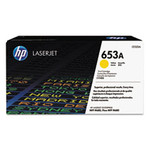- Determine the proper can liner type for your application.
There are two types of resins commonly used in the manufacturing of can liners. To decide which one you need, answer this question: “Are sharp objects being thrown away?”
If the answer is yes, you need Linear Low Density. If the answer is no, select High Density.Linear Low Density:
Features maximum puncture and tear resistance
Suitable for a wide range of applications
High Density
For soft refuse (typical office, restroom, paper products, etc.)
Substantial cost savings per liner
- What size container does the liner need to fit?
Ideally, there should be a 3" - 4" overhang on the trash receptacles
Check the gallon capacity or size printed on your container
- How much does the liner need to hold?
Determine the average weight of a full can liner
Check the product column inside this brochure under the type and size you’ve determined in the first two steps
Under the “Max Load” column, find the number closest to your figure — that’s the can liner you need
| Linear Low Density - LLDPE | High Density - HDPE |
| Regular .35 to .50 Mil or below | Regular 6 to 8 Mic or below |
| Medium .51 to .75 Mil | Medium 9 to 11 Mic |
| Heavy .76 to 1.0 Mil | Heavy 12 to 15 Mic |
| Extra Heavy (X-Heavy) 1.01 to 1.3 Mil | Extra Heavy (X-Heavy) 16 to 20 Mic |
| Extra Extra Heavy (XX-Heavy) 1.31 to 1.5 Mil | Extra Extra Heavy (XX-Heavy) 21 to 24 Mic |
| Super Heavy (Super Hvy) 1.51 to 2.0 Mil or higher | Super Heavy (Super Hvy) 25 + Mic |
